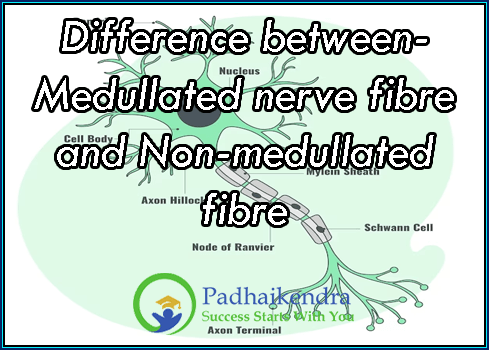Medullated nerve fibers and non-medullated nerve fibers are two types of nerve fibers in the nervous system, which differ in their structure and function.
Medullated nerve fibers:
- Also known as myelinated fibers, they have a myelin sheath, which is a layer of fatty insulation that covers the axon.
- The myelin sheath provides electrical insulation and increases the speed of nerve impulse conduction.
- These fibers are found in the central and peripheral nervous systems and are responsible for transmitting rapid and precise impulses.
Non-medullated nerve fibers:
- Also known as unmyelinated fibers, they do not have a myelin sheath.
- Instead, they are surrounded by Schwann cells, which provide structural support.
- These fibers are found in the peripheral nervous system and are responsible for transmitting slower impulses that regulate activities like smooth muscle contraction and glandular secretion.
In summary, the main differences between medullated and non-medullated nerve fibers are their myelin sheath, conduction speed, and functions.





